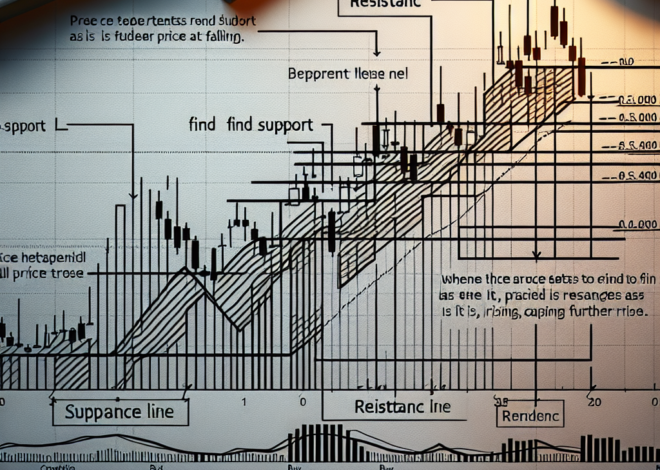Technical analysis
Effective Strategies for Implementing Risk Management in Trading
Implementing Risk Management in Trading Trading in any financial market involves risk. The potential for high returns often comes with a higher risk of significant losses. Therefore, risk management is crucial in trading to protect your investment and maximize your returns. This article will guide you on how to implement risk management in your trading […]
Utilizing Relative Strength Index (RSI) for Identifying Market Momentum
Understanding the Concept of RSI The Relative Strength Index (RSI) is a momentum oscillator that measures the speed and change of price movements. Developed by J. Welles Wilder, this technical analysis tool is primarily used to identify overbought or oversold conditions in a market. RSI is a very popular tool because it can also be […]
Exploring Dow Theory: A Guide to Market Forecasting
Understanding Dow Theory in Market Forecasting Market forecasting is an essential element in the world of trading and investing. It provides investors with a sense of direction and helps them make informed decisions. One of the foundational theories in this arena is the Dow Theory, a cornerstone of technical analysis that investors have relied upon […]
Exploring RSI Divergence as a Strategy for Trade Entry
Understanding RSI Divergence for Trade Entry Trading in the financial markets involves a combination of technical analysis, fundamental analysis, and market sentiment. One of the most popular technical analysis tools used by traders is the Relative Strength Index (RSI). This article will focus on understanding RSI divergence for trade entry. What is RSI? The Relative […]
Exploring Advanced Trading Strategies with the Ichimoku Cloud
Introduction to Advanced Ichimoku Cloud Strategies The Ichimoku Cloud, also known as Ichimoku Kinko Hyo, is a versatile technical analysis tool developed by Goichi Hosoda in the 1930s. It provides a wealth of information about market price action, including trend direction, momentum, and support and resistance levels. While it may seem complex to beginners, with […]
Understanding and Implementing Backtesting of Trading Indicators
Introduction to Backtesting Trading Indicators The world of trading is a complex one, filled with numerous strategies, tools, and methods to predict market movements and make profitable trades. One of these tools is the trading indicator, a statistical measure used to forecast price changes in the market. However, before implementing any trading indicator, it is […]
Exploring Strategies Based on Support and Resistance Levels
Support and Resistance Level Strategies Understanding Support and Resistance Levels Before delving into the strategies, it is essential to understand what support and resistance levels are. In the realm of technical analysis in trading, support and resistance levels are key concepts that form the building blocks of many trading strategies and systems. Support Level A […]
Guide to Identifying Divergence in Relative Strength Index (RSI)
Identifying RSI Divergence In the world of technical analysis, the Relative Strength Index (RSI) is a potent tool used by traders to gauge the momentum and speed of a market’s price movement. One of the most powerful signals that the RSI can provide is the divergence signal. This article will delve into the concept of […]
Mastering Trading Strategies: A Comprehensive Guide to MACD Crossovers
Introduction to MACD Crossovers The Moving Average Convergence Divergence (MACD) is a popular tool among traders, due to its ability to provide insights into market trends and potential trade opportunities. One of the key signals generated by the MACD is the crossover, which can indicate a potential shift in the market trend. Understanding MACD Before […]
Understanding Elliott Wave Analysis in Financial Trading
Elliott Wave Analysis Methods Introduction to Elliott Wave Analysis Elliott Wave Analysis is a form of technical analysis that financial traders use to analyze financial market cycles and forecast market trends. It was developed by Ralph Nelson Elliott in the late 1930s. Elliott believed that stock markets, generally thought to behave in a somewhat chaotic […]









